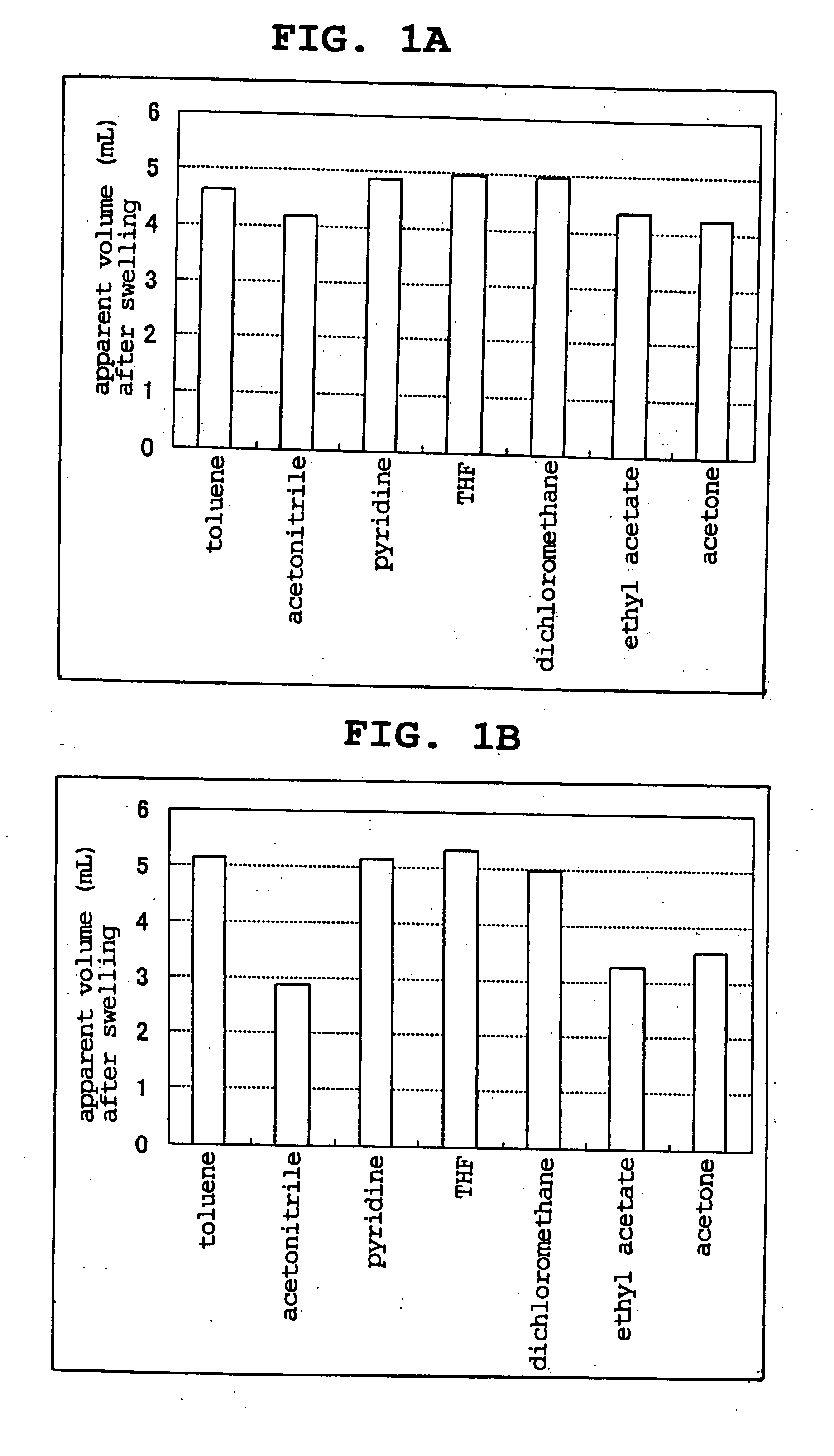Production method of porous resin
- Summary
- Abstract
- Description
- Claims
- Application Information
AI Technical Summary
Benefits of technology
Problems solved by technology
Method used
Image
Examples
example
(Suspension Copolymerization)
[0037] A 2 L separable flask equipped with a condenser, a stirrer and a nitrogen inlet tube was set on a constant temperature water bath, polyvinyl alcohol (48 g, manufactured by Wako Pure Chemical Industries, Ltd., average degree of polymerization about 500) and distilled water (1600 g) were placed therein and stirred at 400 rpm. While respectively flowing cooling water and nitrogen gas, the stirring was continued at a constant temperature water bath temperature of 55° C. to dissolve polyvinyl alcohol. Separately, styrene (80 g, manufactured by Wako Pure Chemical Industries, Ltd.), p-acetoxystyrene (7 g, manufactured by Aldrich), divinylbenzene (7.5 g, manufactured by Wako Pure Chemical Industries, Ltd.), 2-ethylhexanol (70 g, manufactured by Wako Pure Chemical Industries, Ltd.), isooctane (30 g, manufactured by Wako Pure Chemical Industries, Ltd.), dibenzoylperoxide (1.8 g, manufactured by NOF Corporation, containing water by 25%) and n-dodecylmercap...
experimental example
[0042] The porous resin beads obtained in Example and Comparative Example were subjected to the following analysis. [0043] (1) average particle size: laser diffraction / scattering method (apparatus: LA-920, manufactured by HORIBA, Ltd.) [0044] (2) specific surface area: multipoint BET method (apparatus: NOVA1200 manufactured by QuantaChrome Co.) [0045] (3) amount of hydroxyl group: measured by titration based on JIS K0070. To be specific, the hydroxyl group of the porous resin beads (measurement object) was acetylated with a known amount of an acetylation reagent (acetic anhydride), the amount of acetic anhydride left unconsumed during acetylation was determined by titration with potassium hydroxide and the amount of the hydroxyl group of the sample was calculated. Specific method was as follows.
[0046] Acetic anhydride (25 g) and pyridine were mixed to the total amount of 100 mL and used as an acetylation reagent. A measurement sample (0.5-2 g, dry porous resin beads) was measured a...
PUM
| Property | Measurement | Unit |
|---|---|---|
| Weight | aaaaa | aaaaa |
Abstract
Description
Claims
Application Information
 Login to View More
Login to View More - R&D
- Intellectual Property
- Life Sciences
- Materials
- Tech Scout
- Unparalleled Data Quality
- Higher Quality Content
- 60% Fewer Hallucinations
Browse by: Latest US Patents, China's latest patents, Technical Efficacy Thesaurus, Application Domain, Technology Topic, Popular Technical Reports.
© 2025 PatSnap. All rights reserved.Legal|Privacy policy|Modern Slavery Act Transparency Statement|Sitemap|About US| Contact US: help@patsnap.com

